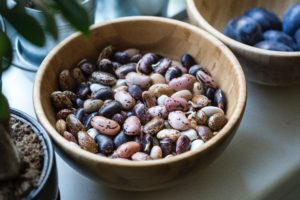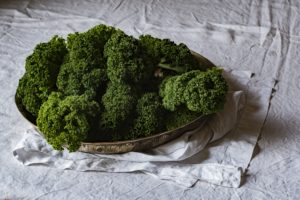If you are still struggling with bloating after last week’s blog, read ahead. We are going to continue to share tips this week for reducing and eliminating bloating. If you have not already, discuss this issue with a professional at Gastroenterology Consultants of Central Florida.
Avoid swallowing air and gas to reduce bloating:
![]() There are two sources of gas found in the digestive system. Gas is produced by the bacteria in the gut. Then, there is the air or gas people swallow when eating. The culprit here is carbonated, fizzy drinks.
There are two sources of gas found in the digestive system. Gas is produced by the bacteria in the gut. Then, there is the air or gas people swallow when eating. The culprit here is carbonated, fizzy drinks.
Yes, they can be tasty and a delightful treat, but remember the after effects. These yummy drinks contain bubbles with carbon dioxide inside of them. This gas is released from the liquid once it reaches your stomach.
This can causes burping or longer lasting effects such as bloating or cramping. Eating in a hurry, eating while talking, drinking through a straw, and chewing gum can cause people to swallow air.
Avoid foods that give you gas:
Plenty of high fiber foods make people produce excess amounts of gas. Legumes and whole grains have plenty of fiber. Beans and lentils are examples of what to eat in moderation or not at all if they cause too great of irritation.
 The simplest and most straightforward way to keep track of what causes your bloating is by journaling. Keep a food diary of what you eat and mark whatever makes you gassy or bloated. Fatty foods may stay in the stomach longer which can slow digestion and the emptying of the stomach.
The simplest and most straightforward way to keep track of what causes your bloating is by journaling. Keep a food diary of what you eat and mark whatever makes you gassy or bloated. Fatty foods may stay in the stomach longer which can slow digestion and the emptying of the stomach.
Beans are known to make people feel gassy. Beans and lentils are types of legumes that are high in protein and healthy carbohydrates. They are extremely rich in fiber, vitamins, and minerals. Beans and lentils contain sugars called alpha-galactosides. These sugars belong to a food group referred to as FODMAPs.
Wheat contains a protein called gluten, which has been highly controversial over the last decade. Yet, wheat is continuously consumed as it is an ingredient in most breads, pastas, tortillas, and pizzas. For the population with celiac disease or a gluten sensitivity, wheat causes serious digestive issues besides minor bloating.
Wheat also contains FODMAPs. Consider buying gluten-free products or alternatives such as oats, buckwheat, coconut flour, and almond flour products. Check out alternatives to wheat in order to reduce bloating.
What are FODMAPs:
This stands for fermentable oligo-, di-, mono-saccharides, and polyols. FODMAPs are short chain carbohydrates that escape digestion. They are then fermented by gut bacteria in the colon. Gas is a byproduct of this process causing people to feel “gassy”.
For many people, FODMAPs do not cause irritation and only fuel for beneficial digestive bacteria. For patients with irritable bowel syndrome, another gas is produced during the fermentation process. This tends to cause major discomfort, flatulence, cramping, diarrhea, and bloating.
Did you know soaking beans may reduce the FODMAPs? Changing the soaking water can decrease the number of FODMAPs further helping you to reduce bloating. If you must eat beans, gravitate towards soaked pinto and black beans. Choose lighter lentils if you also cannot completely cut them out of your diet. Dark lentils have more fiber and tend to bloat bellies more.
Healthy diets may make stomachs look bloated:
So you are sticking to a healthy diet or way of eating and you are continuing to look round or bloated. You are seeing the number on the scale decrease, yet the stomach area pokes out. Adding broccoli and other cruciferous foods to your diet can cause the bloating and pouch appearance, but this does not mean they are not nutrient rich.
Broccoli, cauliflower, brussel sprouts, cabbage, collards, kale, and arugula are just some examples of cruciferous vegetables. Dark cruciferous greens are an excellent source of vitamins A and C. They do, however, contain FODMAPs.
 But before you consider removing them from your meal plan to reduce bloating, remember the benefits to your health. They contain phytonutrients which helps reduce the risk of developing cancer. Plus, cruciferous vegetables are high in fiber and low in calories which creates the satisfied feeling without eating much.
But before you consider removing them from your meal plan to reduce bloating, remember the benefits to your health. They contain phytonutrients which helps reduce the risk of developing cancer. Plus, cruciferous vegetables are high in fiber and low in calories which creates the satisfied feeling without eating much.
Onions are bulb vegetables that are flavorful in used in many dishes. Even though onions are usually eaten in small quantities, they contain sources of fructans. Fructans are soluble fibers which cause bloating. Try using minimal amounts of onions or consider using herbs and spices instead of onions for flavor.
In addition to the foods to avoid previously mentioned, cut out dairy, rye, barley, beer, sugar alcohols, garlic, and apples. Total removal of these foods are not required but may alleviate your bloating. Speak with your gastroenterologist before making any drastic changes to your diet. We wish you all the best of luck with your resolutions and health endeavors!
Staff Writer
